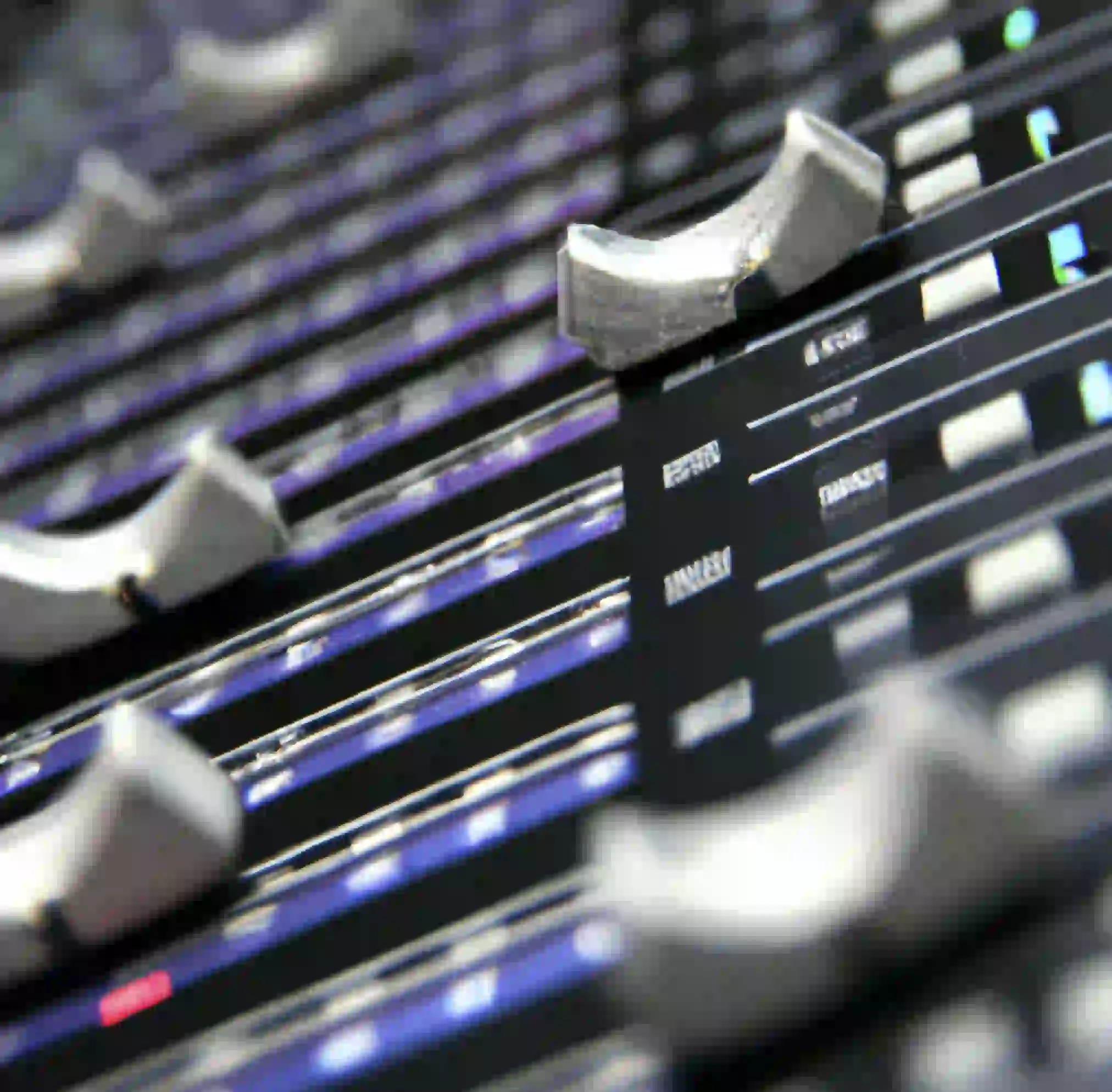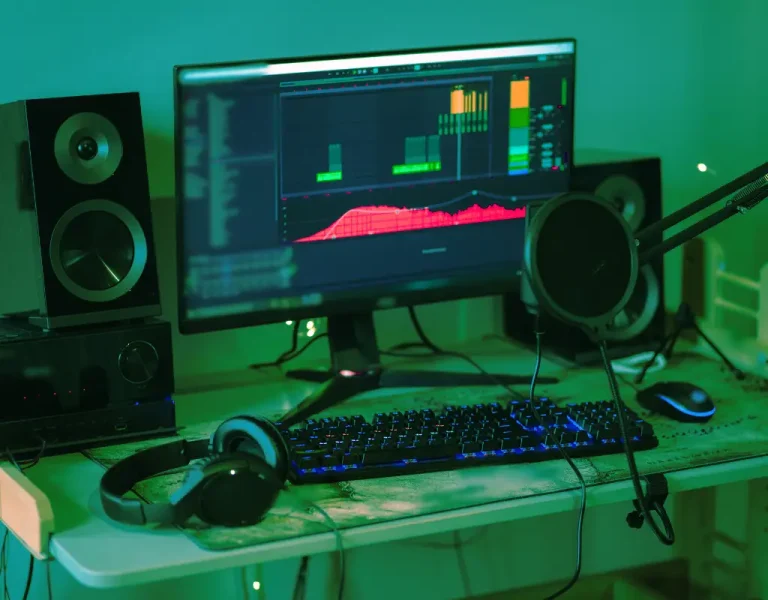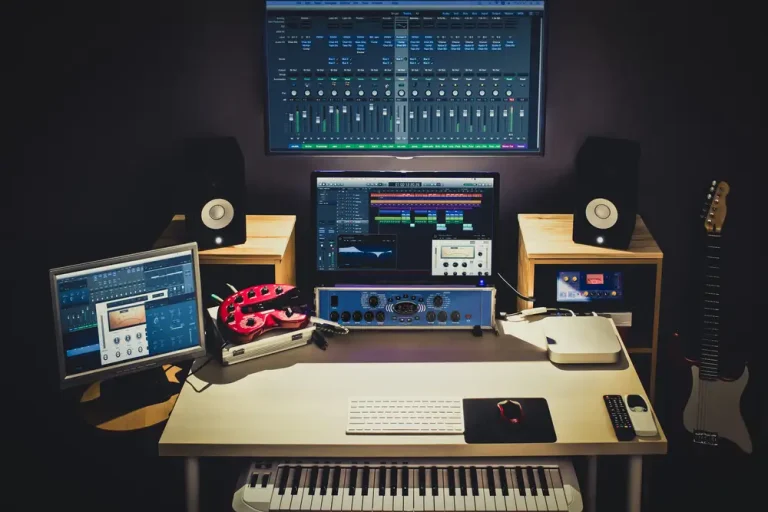Why Mix Sound: The Importance of Audio Balancing
Sound mixing is crucial for aspiring music producers, and it involves blending various audio elements to produce a harmonious and cohesive final piece.
Learning essential skills like adjusting levels, equalization, and panning is crucial because it helps make music, movies, and TV shows look and sound better.
In this article, we will delve into sound mixing fundamentals, discuss its significance and offer practical tips to kickstart your journey as a music producer.
By honing the art of sound mixing, you’ll craft captivating audio experiences.
These immersive creations will deeply resonate with your audience, leaving a lasting impression.
Let’s buckle up!
Key Takeaways
- Sound mixing is crucial for creating a polished and professional-sounding final product in music production, movies, and TV shows.
- Good sound mixing allows for emotional impact, clarity, and balance in a recording, highlighting each element in the track.
- Mixing involves adjusting volume and pan, equalization and compression, and adding effects and processing. Using reference tracks and understanding frequencies can also aid in achieving a balanced mix. However, challenges in mixing sound include subjectivity and complexity of projects.
Table of Contents
Why Mix Sound: The Importance of Sound Mixing

Sound mixing blends various audio parts to make a smooth and pleasing track for listeners. It’s essential in music production, movies, TV shows, and other media where audio is key.
Sound mixing means tweaking levels, equalization, panning, and other aspects of tracks like vocals, instruments, and effects.
This creates a nice final mix for our ears, and it’s a vital step after production to ensure the final sound is polished and ready for the industry (Berklee Online).
Sound mixing focuses on balancing dialogue, music, and sound effects for film and TV audio. A talented audio mixer adjusts and controls these parts to ensure every sound is clear and well-balanced and works together to support the visuals in the project (Wikipedia).
Some key techniques and concepts utilized in sound mixing include:
- Level adjustment: Setting the volume of individual audio sources to create a balanced mix.
- Equalization: Shaping the frequency content of each audio source to help it sit better within the mix and reduce frequency clashes.
- Panning and spatial placement: Positioning audio sources within the stereo or surround sound field to create space and depth in the mix (LANDR).
Ultimately, sound mixing is a complex and creative process, relying on the artistry and expertise of professional audio mixers to achieve the desired outcome.
Sound mixers carefully combine and adjust audio elements to ensure the final product delivers a polished, immersive auditory experience.
The Importance of Mixing Sound
Sound mixing is an essential aspect of music production, as it significantly influences the overall quality and impact of a song or recording.
This section will discuss the importance of mixing sound regarding emotional impact, clarity, and balance.
Emotional Impact
Sound mixing is essential for a song and helps create the song’s feelings.
Mixing combines different parts of a song, like instruments and singing, making the music’s mood and theme stand out.
By controlling aspects like volume levels, reverb, and EQ, a skilled mixing engineer can emphasize the critical elements of a song and create an engaging listening experience. (source)
Clarity and Balance
Mixing provides clarity and balance within a recording, ensuring that individual sounds are not overpowered or lost in the mix.
This makes for a final professional product that genuinely highlights each element in the track. (source)
With precise mixing, instruments and vocal parts are balanced to enhance each other and draw the listener in.
Good mixing allows artists to highlight some tracks and ensure that every part stands out.
When done correctly, a song can sound as good or even better than popular songs, making it easier for the artist to reach a wider audience with their music. (source)
The Mixing Process

Mixing is important for making a polished and clear final product in music production.
In this section, we’ll discuss the mixing process’s main parts. We’ll focus on adjusting volume and pan, equalization and compression, and adding effects and processing.
Volume and Pan Adjustments
To achieve a balanced sound, mix engineers adjust the volume levels of individual instrument tracks.
This process ensures that no single element overpowers the others, resulting in a cohesive mix.
Additionally, panning refers to positioning sounds within the stereo field, either to the left or right speaker.
Strategic use of pan adjustments can create depth and spaciousness, making the mix sound more engaging to the listener.
Equalization and Compression
Equalization, or EQ, is a process that helps improve the sound balance in a mix. It does this by increasing or decreasing specific frequencies. EQ can make a mix clearer, eliminate unwanted noise, and improve the overall sound.
Compression is another technique used in mixing, and it helps manage the volume differences in an audio track. Compression creates a more even and polished sound by making loud parts quieter and quiet parts louder.
Mix engineers often use both EQ and compression in tandem to achieve their desired sound.
Effects and Processing
Different techniques and effects are used during the mixing process to give the music depth, personality, and emotion.
Some popular effects are reverb, delay, and modulation.
Reverb helps create a feeling of space.
Delay makes the sound richer and fuller. Modulation effects, like chorus and phaser, give the mix a unique character and texture.
Mixing engineers use these effects carefully, ensuring they improve the music without removing its overall quality.
Proper use of effects and processing can elevate a mix to a more professional and polished level.
Mixing Techniques and Tips
Monitoring and Listening Environment
Proper monitoring and an ideal listening environment are essential for accurate mixing decisions.
It’s important to use quality studio monitors or headphones to ensure that the sound is accurately portrayed.
Additionally, treat your room acoustically to minimize reflections and standing waves that could affect your perception of the mix.
Reference Tracks
Using reference tracks is a crucial tip for achieving a professional-sounding mix. Reference tracks are professionally mixed and mastered songs that you can use as a benchmark to compare your mix.
This will help you assess your mix’s overall balance, frequency distribution, and dynamic range and make appropriate adjustments to match the quality of commercial releases.
Achieving a Balanced Mix
To achieve a balanced mix, you need to focus on various elements such as:
- Volume: Adjust the levels of individual tracks to ensure they blend well together, and no single element is overpowering or inaudible.
- Panning: Distribute the sound sources horizontally to create a sense of space and width in your mix.
- Frequency Imaging: Use EQ to shape the tonal balance of each track and avoid frequency clashes between different instruments and vocals.
- Dynamics: Apply compression and other dynamic processing to control the dynamic range and maintain consistent loudness throughout the mix.
- Effects: Utilize time-based effects such as reverb and delay to add depth and spatial dimension to your mix, as described in this LANDR article.
These mixing techniques and tips will help you create a polished, professional-sounding mix that effectively conveys your musical vision.
Frequencies
Understanding frequencies is crucial to achieving a well-balanced and professional-sounding mix in audio mixing.
Different instruments and sounds occupy different frequency ranges, which can be manipulated using equalization (EQ) tools to create a clear and balanced mix.
Frequencies are typically divided into several ranges, each with its characteristics and implications for mixing.
We can broadly categorize these ranges as follows:
- Sub-Bass (20 to 60 Hz): This range contains the lowest frequencies, often felt more than heard. It contributes to the overall power of a mix but should be used carefully to avoid muddiness. (source)
- Bass (60 to 250 Hz): This range is responsible for the warmth and weight of a mix. It is essential to maintain clarity in this range to prevent low-frequency buildup.
- Low-midrange (250 to 500 Hz): Frequencies in this range can create a sense of depth and body in a mix, but too much can lead to a boomy or muffled sound.
- Midrange (500 Hz to 2 kHz): This range is vital for the intelligibility of vocals and for providing a present and detailed mix.
- Upper-midrange (2 to 4 kHz): This area contributes significantly to the overall clarity and definition of the mix but must be treated carefully to avoid harshness.
- High frequencies (4 to 20 kHz): This range imparts a sense of airiness and sparkle to the mix. (source)
Frequencies form the backbone of any mix, and understanding how each range interacts with others can help create mixes that sound full and cohesive without any range overpowering another.
While EQ tools are essential in shaping the frequency content of a mix, it is necessary to approach them with precision and care, making deliberate adjustments to achieve the desired balance.
Challenges in Mixing Sound
Subjectivity
One of the primary challenges in mixing sound is the inherent subjectivity that comes with audio perception.
Different listeners may prefer varied interpretations of the same source material, making it difficult to achieve a mix that pleases everyone.
Audio mixing is a creative process, and balancing personal preferences and objective standards can be demanding.
Complexity of Projects
Another challenge in mixing sound is the increasing complexity of projects. As modern music and audio production techniques evolve, more layers, effects, and automation may be incorporated into a mix.
This development adds a level of intricacy that can make mixing time-consuming and require a deeper understanding of the tools and techniques involved.
Additionally, engineers must avoid over-compression and other common mixing mistakes that can negatively impact the final product.
Addressing these challenges in mixing sound demands technical proficiency, creativity, and a keen understanding of the listener’s perspective.
Sound engineers can create polished, engaging mixes that resonate with their audience by acknowledging and navigating these obstacles.
Conclusion
In the world of making music, mixing is super important, and it makes songs sound better by giving each instrument its own clear space.
Mixing involves changing levels, moving sounds left or right, and using special effects like EQ, compression, and reverb. These techniques help to create a balanced and polished final piece.
When done right, a professional mix can make it feel like the sound is floating in the air in front of the listener. This creates a fantastic experience for the person listening (New York Spaces).
Putting time and effort into mixing can make your music sound way better. It helps to show off the artistic choices made in each part of the song.
Even though mixing and mastering are important in music production, mixing should be the main focus.
A well-mixed song can still sound good without mastering it. But a lousy mix can’t be fixed by mastering alone.
So, as you start mixing, be patient and pay attention to the small things.
Your hard work will show in your music, giving your audience an unforgettable listening experience.







